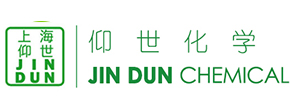Accelerated pace of global energy green and low-carbon transformation under multiple impacts
2023/8/24
The pace is accelerating
On the contrary, the significant increase in fossil fuel prices and concerns about supply security have accelerated global investment in clean energy. Lauri Myllyvirta, Chief Analyst of the Finnish Energy and Clean Air Research Center, pointed out in an interview with China News Agency that the global green energy transformation process has not slowed down or even accelerated. For many governments, energy security issues instinctively imply a focus on fossil fuels, but clean energy is a more solid foundation for ensuring energy security, and investors and consumers are 'voting with their feet'
The most noticeable trend in the global green energy transformation over the past three years has been the explosive growth in solar photovoltaic installation and electric vehicle sales. Distributed clean energy technologies such as batteries and heat pumps are also thriving, "Milivolta said. The significant rise in coal, oil, and natural gas prices has made clean energy highly competitive economically, and the growth of these technologies in China has promoted global deployment growth.
The International Energy Agency released a mid-term oil market report for 2023 in June this year, stating that due to the global energy crisis highlighting high oil prices and supply security issues, the pace of global transformation towards clean energy technology is accelerating, and the growth rate of global oil demand will significantly slow down in the coming years. Director of the International Energy Agency, Birol, stated that the transition to a clean energy economy is accelerating, and with the development of electric vehicles, improved energy efficiency, and other technological advancements, global oil demand is expected to peak before 2030.
Gu Baihe, associate researcher of the Chinese Academy of Sciences Institute of Science and Technology Strategic Consulting, previously wrote that in the short term, in order to ensure the security of energy supply, countries will rely more on fossil energy, which may have a negative impact on the global climate goals. But in the long run, it will drive more investment in renewable energy, energy efficiency, and accelerate energy transformation.
The Golden Development Period
Gu Baihe believes that more and more countries are realizing the importance of energy independence and seeking to replace traditional energy through clean energy development. As an important solution to enhance energy independence and ensure energy security, renewable energy is expected to usher in a golden period of development.
In recent years, multiple countries and regions around the world have actively sought to transition to a clean, low-carbon, and efficient energy system by increasing the development of renewable energy. For example, China issued the "Action Plan for Carbon Peak before 2030" in 2021, which pointed out that we will vigorously develop new energy, comprehensively promote the large-scale development and high-quality development of wind and solar power, and further improve the mechanism for ensuring the consumption of renewable energy electricity. By 2030, the total installed capacity of wind and solar power generation will reach over 1.2 billion kilowatts. In March 2022, the European Commission proposed a plan called REPowerEU, which aims to gradually eliminate dependence on Russian fossil fuels by 2027. It proposes to increase the EU's energy efficiency target from 9% to 13% by 2030, and to increase the proportion of renewable energy in EU energy consumption from 40% to 45% by 2030. In August of the same year, the 2022 Inflation Reduction Act of the United States officially took effect, with plans to invest $369 billion in energy security and climate change over the next 10 years, with renewable energy production and manufacturing being the top priority.
The latest report released by the International Energy Agency on the Renewable Energy Market Update shows that due to policy support, rising fossil fuel prices, and active promotion of solar and wind power generation projects, it is expected that the global installed capacity of renewable energy will increase by one-third this year, and the global renewable energy generation will continue to grow next year. It is expected that the world will have sufficient solar photovoltaic manufacturing capacity by 2030.
Miliverta believes that the breakthroughs achieved by solar and wind energy will provide a foundation for the global green and low-carbon transformation of energy. The future of achieving 100% clean energy requires a large number of supportive actions and measures, such as reforming the electricity market to flexibly use renewable energy, and investing in electricity storage and transmission. Countries that implement these supportive policies correctly will benefit the most
Significant 'North South Gap'
It should be noted that although many countries are accelerating the pace of green and low-carbon energy transformation, the path to transformation is still blocked and long. Analysts point out that in the process of green and low-carbon energy transformation, there is a development imbalance between developed and developing countries, with a significant "north-south gap". Developing countries, especially small island countries, least developed countries, and African countries, have made slow progress in the absence of financial drive and technical assistance.
According to an article in The Economist magazine, many developing countries still prefer cheap energy. Renewable energy, due to unstable supply, is difficult to completely replace fossil fuels in the short term, resulting in a supply and demand gap. In addition, the cost of new energy is much higher than that of traditional fossil fuels.
In June of this year, the International Renewable Energy Agency released the "2023 World Energy Transformation Outlook" report, which pointed out that currently, energy transformation investment is still concentrated in a few countries and only concentrated in a few technologies. The report suggests that developed countries and multilateral financial institutions should increase financial support for energy transformation in developing countries. Only by concentrating our efforts to solve the bottleneck of the transformation of developing countries and unleashing their enormous market potential, can we achieve the United Nations Sustainable Development Goals as soon as possible.
JIN DUN CHEMICAL has built a special (meth) acrylic monomer manufacturing base in ZHEJIANG province. This makes sure the stable supply of HEMA, HPMA, HEA, HPA, GMA with high level quality. Our special acrylate monomers are widely used for thermosetting acrylic resins, crosslinkable emulsion polymers, acrylate anaerobic adhesive, two-component acrylate adhesive, solvent acrylate adhesive, emulsion acrylate adhesive, paper finishing agent and painting acrylic resins in adhesive.We have also developed the new and special (meth) acrylic monomers and derivatives. Such as the fluorinated acrylate monomers, It can be widely used in coating leveling agent, paints, inks, photosensitive resins, optical materials, fiber treatment, modifier for plastic or rubber field. We are aiming to be the top supplier in the field of special acrylate monomers, to share our rich experience with better quality products and professional service.

